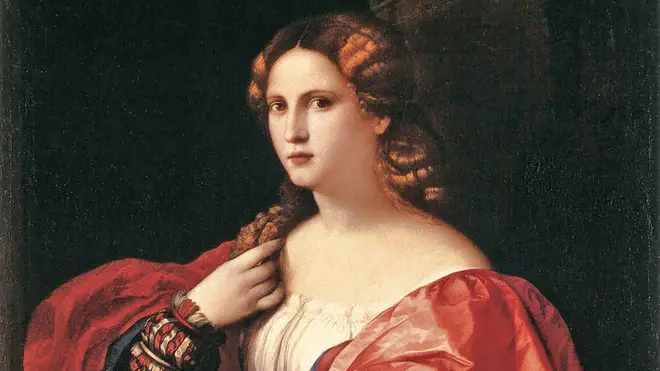Who was Francesca Caccini? The Italian Baroque composer and author of the oldest surviving opera by a woman
16 March 2022, 17:28

Singer, composer, and lutenist. Born in the 1500s, Francesca Caccini was the epitome of the multi-talented musician.
Listen to this article
Francesca Caccini was born on 18 September 1587 into a highly musical family. Her father, Giulio Caccini was a famed Italian Baroque composer, and her sister, Settimia Caccini, was a well-known singer during the 1600s.
A musical virtuoso, Francesca was a singer, lutenist, and talented composer. For years, she was the highest paid musician in the Medici court. She is also the author of what it thought to be the oldest surviving opera written by a woman.
Despite being one of the most successful composers of the early Baroque era, she has been lost to the history books which are dominated by male counterparts such as Monteverdi and the slightly lesser-known, Jacopo Peri.
Read more: 10 of the best Baroque composers
Next up is #FrancescaCaccini 🎶🌸 #IWD2021 Francesca Caccini is thought to have been the first #femalecomposer to write an #opera #femaleoperacomposer #femalecomposers 🎶☀️✍️ pic.twitter.com/3VMIEfWsSa
— Rosie Brooks (@rosiebrookspics) March 8, 2021
One piece of work that remains by Caccini is her opera, La liberazione di Ruggiero (translation: The Liberation of Ruggiero from the island of Alcina).
As well as being the oldest known opera written by a woman, the plot itself is truly iconic in its own right.
The best opera plots often leave behind the world as we know it and venture into the fantastical and sometimes magical. Caccini goes one step further and takes us into the utterly bizarre.
The work includes singing plants, sorceresses arriving on dolphins, a chorus of monsters, boats that can grow wings and fly, and a ballet designed to be performed on horseback.
Every stage manager’s dream... or nightmare depending on budget.
Read more: Jennifer Saunders joins Classic FM to present a new series exploring the world of opera

Vidita Kanniks sings 'Nunzia' from La liberazione di Ruggiero, Francesca Caccini
The plot originates in the epic poem, Orlando Furioso by Ludovico Ariosto. In the poem, the warrior Ruggiero is fought over by two sorceresses; the sensual Alcina, and the moralistic Melissa. The opera takes place on Alcina’s island, hence the name.
In the opera, Caccini uses flat keys to musically portray the feminine characters, and sharp keys to portray the male characters. When the sorceress Alcina appears in a male disguise, she is portrayed by the key of C major, which has no flats or sharps.
The music leans towards the higher voices, with the chorus made up of six sopranos, two altos, seven tenors, and just one bass, who are joined by a trio of recorders.
The opera was written for a 1625 premiere at the Medici court to celebrate the visit of Prince Władysław of Poland during Carnival that year. The Prince enjoyed it so much that he had the opera performed in Warsaw three years later.
Read more: The 4 eras of classical music: a quick guide

Francesca Caccini: Lasciatemi Qui Solo
La liberazione di Ruggiero was not Caccini’s only opera. She wrote at least 16 major staged works, but only La liberazione di Ruggiero survives in full.
Caccini was known for being a quick composer, and was likened to her court counterparts (including Jacopo Peri) as equal in productivity. Almost none of her music survives, however, from the scores that do, critics have dubbed her as a ‘master of dramatic harmonic surprise’.
Although we cannot listen to much of Caccini’s music, her name deserves to be celebrated as much as the male counterparts of her time.
Caccini is not the only woman composer to be lost to history; learn more about her counterparts such as the amazing story of Baroque composer Barbara Strozzi.
Want to see Francesca Caccini’s music in the Classic FM Hall of Fame, the world’s biggest poll of classical music tastes? Vote for it here.






















